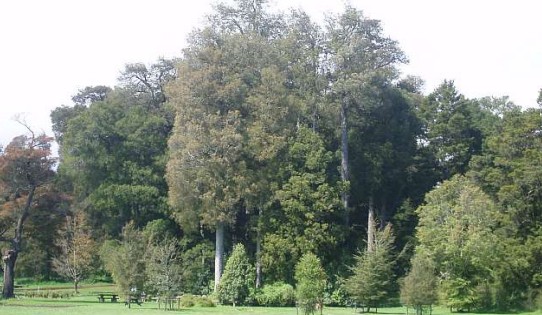The Towering Kahikatea: A Key Species in Our Restoration Efforts

Kahikatea is a tree of lowland swamp forests, a type of ecosystem which would once have covered much of the Motueka and adjoining valleys. It is our tallest native tree, growing to 65 metres and up to one metre in diameter, the tallest tree remaining in New Zealand today is in the Pirongia Forest Reserve and at 55.1 m is the tallest native tree in the country. It is endemic to New Zealand, meaning it is native only to this country and has been here for 160 million years! The fruit of the Kahikatea which feeds our native birds today, borne on the top of these magnificent trees once fed pre-historic dinosaurs during the Jurassic period. The tree has no flowers, as it developed about 20 million years before flowers evolved.
Known by various names by Māori, including kahika, katea, kōaka and koroī, European settlers named it White Pine, though Kahikatea is not a pine tree but a podocarp, meaning its fruit is a fleshy foot. Māori had uses for kahikatea as food from the seed, and for carving, and due to their attraction to birds, were important in the context of hunting. When James Cook travelled up the Waihou River in 1769 in the first European craft to do so, the towering forests were described as being “of great height and as straight as an arrow”, which led to a perception that they were ideal as mast timber. Ships were soon carrying kahikatea away with the first of these, the Fancy in that same year, taking the first 200 spars, some of which reached 43 metres, while ignoring the nearby Kauri slopes. However, the timber is not durable and prone to rotting and borer, and was eventually relegated for use as butter boxes. The book Ngā Uruora by Geoff Park, describes these early journeys up the Waihou River and if it can be found, is well worth a read.
In the Motueka Catchment area there has, like much of the country, seen widespread loss of Kahikatea swamp forest as these are areas that were logged, burnt and drained to enable farms and towns to be established. Small remnants remain on private land, often in covenanted areas, and small public reserves such as in Haycock’s Bush. The forests of Kahikatea would have grown alongside other podocarps such as totara, rimu and matai, along with black beech, hard beech, kāmahi, and tītoki.
Restoring, protecting, and replanting these unique, and ancient forest types is possible and even small areas planted in the right place, can help support our bird populations, which in turn will help spread the seed of our trees further afield. For advice on how to restore your land, advice is available from.
Previous Story
